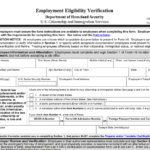Classified information is a cornerstone of national security and diplomacy. It encompasses sensitive data ranging from military plans and intelligence reports to diplomatic cables and scientific research. The unauthorized disclosure of classified information can have grave consequences, jeopardizing not only national security but also international relations and the safety of individuals.

Thus, safeguarding classified information is of paramount importance. In this article, we will explore the various strategies and technologies employed to protect classified information, drawing insights from sources such as the Defense Counterintelligence and Security Agency (DCSA) and the Congressional Research Service (CRS).
The Importance of Safeguarding Classified Information
Classified information can be broadly categorized into three main levels: Confidential, Secret, and Top Secret. Each level represents a different degree of sensitivity and potential harm that could result from unauthorized disclosure. For example, Confidential information could reasonably be expected to cause damage to national security if disclosed, while Secret information could cause serious damage, and Top Secret information could cause exceptionally grave damage.
The consequences of mishandling classified information can range from legal penalties to significant national security threats. Leaks can expose military strategies, intelligence sources, and diplomatic negotiations, thereby compromising national interests and even lives. Ensuring the protection of classified information is a multi-faceted endeavor that involves policies, physical security, and advanced technologies.
Policies and Regulations
1. Security Clearances and Need-to-Know
A fundamental element in safeguarding classified information is the granting of security clearances. Security clearances are determined by the level of classified information an individual needs to access to perform their job. These clearances are granted based on an individual’s background, trustworthiness, and need-to-know. Need-to-know is a critical principle, ensuring that individuals only have access to the specific information required to perform their job duties.
2. Classification Guides
Classifiers, typically senior officials or experts in the field, create classification guides for each type of classified information. These guides outline the specific criteria that must be met for information to be classified at a particular level and provide guidance on handling and storing such information.
3. Handling Procedures
Agencies and organizations that deal with classified information establish strict handling procedures. These procedures include how to mark, transmit, store, and dispose of classified materials. Additionally, there are guidelines for reporting security incidents and breaches, which can trigger investigations and appropriate responses.
Physical Security Measures
1. Secure Facilities
Physical security plays a pivotal role in safeguarding classified information. Sensitive information is often stored in secure facilities with controlled access, such as safes, vaults, or dedicated rooms. These facilities are equipped with alarm systems, surveillance cameras, and intrusion detection devices to deter unauthorized access.
2. Access Control
Access control mechanisms are used to ensure that only authorized personnel can enter areas where classified information is stored. This includes using biometric authentication, smart cards, personal identification numbers (PINs), or combinations of these methods. Electronic access logs are maintained to track who enters and exits these areas.
3. Secure Communications
Secure communication channels are crucial for transmitting classified information. Secure phones, encrypted email systems, and secure video conferencing tools are utilized to prevent eavesdropping and data interception.
Technological Safeguards
1. Encryption
Encryption is an indispensable technology for protecting classified information during transmission and storage. Advanced encryption methods, such as end-to-end encryption, ensure that even if data is intercepted, it remains unintelligible to unauthorized individuals.
2. Intrusion Detection and Prevention Systems (IDPS)
Intrusion detection and prevention systems are used to monitor network traffic for signs of unauthorized access or malicious activity. These systems can automatically block suspicious traffic and generate alerts for further investigation.
3. Data Loss Prevention (DLP) Solutions
DLP solutions are designed to prevent the unauthorized transfer of classified information. They use content inspection and contextual analysis to identify and block the transfer of sensitive data outside authorized channels.
4. Secure Access Controls
Secure access controls are used to restrict access to classified information on a need-to-know basis. Role-based access control (RBAC) and attribute-based access control (ABAC) are commonly implemented to ensure that only authorized personnel can access specific documents or systems.
5. Virtual Private Networks (VPNs)
VPNs are used to create secure, encrypted tunnels for remote access to classified systems and data. This ensures that personnel can access information securely, even when working outside secure facilities.
6. Secure Storage Solutions
Classified information is often stored on encrypted and tamper-evident media. Secure storage solutions can include encrypted hard drives, removable media, and secure cloud storage.
Challenges and Emerging Technologies
Safeguarding classified information is an ongoing challenge, especially in an era of rapid technological advancement. As technology evolves, so do the methods and tools available to both protect and compromise classified information.
1. Insider Threats
One of the most significant challenges in safeguarding classified information is insider threats. Individuals with authorized access may misuse their privileges. Emerging technologies like user behavior analytics (UBA) and artificial intelligence (AI) can help identify suspicious activities and potential insider threats.
2. Cyberattacks
Cyberattacks pose a substantial risk to classified information. Adversaries continuously develop new techniques to compromise data security. To counter these threats, organizations must invest in advanced cybersecurity measures such as threat intelligence, multi-factor authentication (MFA), and machine learning-based intrusion detection.
3. Quantum Computing
Quantum computing is a disruptive technology that could potentially break current encryption algorithms. Preparing for the quantum threat, researchers are working on post-quantum cryptography, which aims to develop encryption methods that are resistant to quantum attacks.
4. Secure Collaboration Tools
In an increasingly digital and interconnected world, secure collaboration tools are essential. Agencies and organizations need secure platforms that allow personnel to work together while ensuring that classified information remains protected. Such tools may incorporate end-to-end encryption, multi-party computation, and secure file sharing.
5. Blockchain Technology
Blockchain technology offers the potential to enhance the security and traceability of classified information. By creating immutable records of access and changes to documents, blockchain can provide an additional layer of security and accountability.
Conclusion
Safeguarding classified information is a complex and multi-dimensional process that involves policies, physical security measures, and advanced technologies. The consequences of failing to protect such information can be severe, affecting national security and diplomatic relations. Strict security clearances, classification guides, and handling procedures are vital for ensuring that only authorized individuals have access to classified information.
Physical security measures, such as secure facilities and access controls, are used to protect information at rest, while encryption, intrusion detection systems, and data loss prevention solutions are employed to secure data in transit and in use. Emerging technologies, including AI, blockchain, and quantum-resistant encryption, are being developed to address new and evolving threats.
As the landscape of classified information protection evolves, it is crucial for government agencies, organizations, and individuals with access to classified information to remain vigilant and continually adapt to the changing security environment. By combining robust policies, physical security, and advanced technologies, we can better protect our nation’s most sensitive information from potential adversaries.



